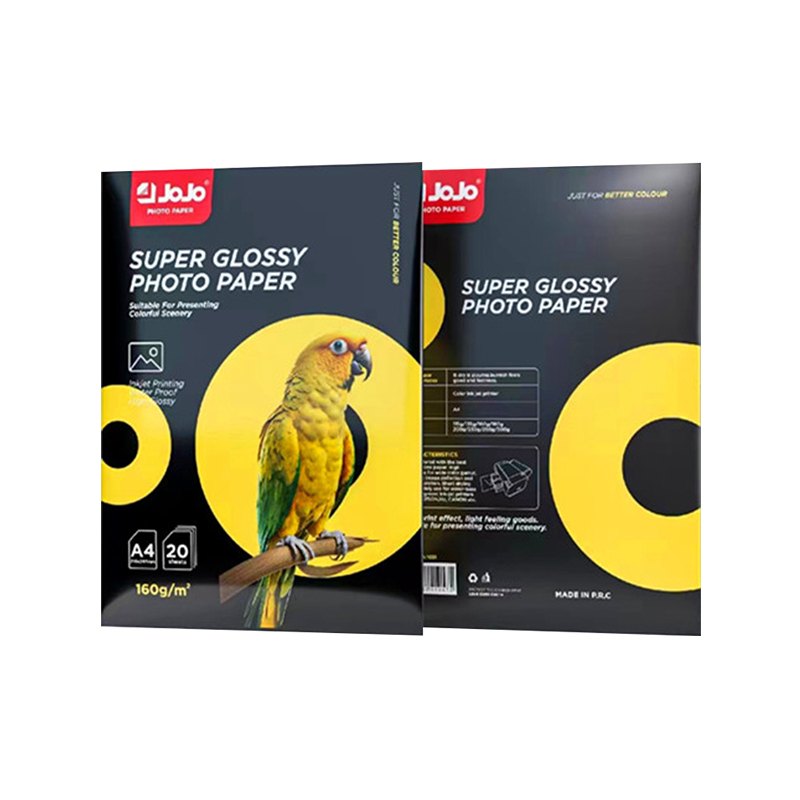If you need any help, please feel free to contact us
New Printing Needs In The Educational And DIY Markets
As digital printing technologies continue to expand in scope and accessibility, both the educational and DIY markets are experiencing a surge in demand for more versatile, affordable, and high-quality printing materials. This growth is driven by the increasing use of visual learning tools, home crafting projects, and the rise of small-scale, home-based businesses. In response to these evolving needs, products like RC satin photo paper, thermal transfer printer paper, and thermal transfer ink are finding broader applications beyond traditional commercial printing environments.

The Rise of Visual Education Tools
In schools, colleges, and learning centers, visual aids are becoming essential for effective instruction. Educators are now printing more posters, diagrams, worksheets, and flashcards to support interactive learning. This demand has created a new niche for RC satin photo paper due to its semi-gloss finish, which reduces glare while maintaining vibrant color output. The satin texture is especially well-suited for classroom displays, as it provides a professional appearance while avoiding the high reflectivity of glossy paper.
Furthermore, students working on projects or presentations benefit from photo-quality materials that allow them to showcase creativity and academic content clearly. As a result, schools have begun to invest in materials previously used mainly in professional printing settings. RC satin photo paper, with its water-resistant resin coating, also offers durability in shared environments like classrooms, where handling can cause wear and tear.
DIY Projects at Home: Customization and Creativity
On the home front, DIY enthusiasts are increasingly turning to printable materials to personalize clothing, gifts, home décor, and party supplies. This trend is closely tied to the growing availability of desktop heat press machines and compatible printing supplies. One of the core tools in this space is thermal transfer printer paper, which allows individuals to print custom designs and transfer them onto a variety of surfaces such as fabric, mugs, or wood.
This transfer paper serves as the bridge between digital artwork and physical products. Users can create their own graphics using graphic design software, print them with an inkjet printer, and apply them through heat transfer. These applications are particularly popular among hobbyists creating birthday shirts, custom tote bags, or decorative pillows. The ease of use, combined with increasingly affordable printing supplies, has lowered the entry barrier for home-based creators.
The Role of Thermal Transfer Ink
Supporting these applications is thermal transfer ink, which plays a critical role in ensuring the quality and longevity of the printed designs. Unlike standard inks, thermal transfer ink is engineered to withstand the heat and pressure of transfer processes. It adheres to surfaces in a way that maintains image clarity and resistance to fading or washing.
Thermal transfer ink is particularly suitable for high-demand educational environments where signage and displays may need to last through a school year, or for DIY projects that require repeated washing or handling. Its durability allows users to produce high-impact, long-lasting visuals from the comfort of a classroom or home workshop.
Expanding User Demographics
One of the more interesting developments in this shift is the broadening demographic of users for print media. Children, teenagers, teachers, parents, and hobbyists are all actively engaging with tools and supplies that were once exclusive to professional print studios. This shift is redefining the product design criteria for printing consumables—demanding ease of use, safety, and compatibility with widely available devices like desktop inkjet printers.
Manufacturers are responding by offering smaller packaging options, simplified instructions, and multipurpose materials that function across a range of printers and substrates. For example, thermal transfer printer paper can now be found in formats compatible with both light and dark fabrics, while RC satin photo paper is being adapted to better accommodate standard home printer settings.
The Future of Educational and DIY Printing
Looking forward, the integration of digital content creation with physical printing will continue to reshape how schools and households operate. As software tools for design become more intuitive and accessible, the demand for versatile printing materials will keep expanding.
Materials like RC satin photo paper, thermal transfer printer paper, and thermal transfer ink are not just supporting creativity—they are becoming essential tools in learning and self-expression. Their adaptability, combined with changing user expectations, suggests that these products will remain central to the next generation of educational and DIY print solutions.

 English
English Español
Español 中文简体
中文简体 Português
Português

